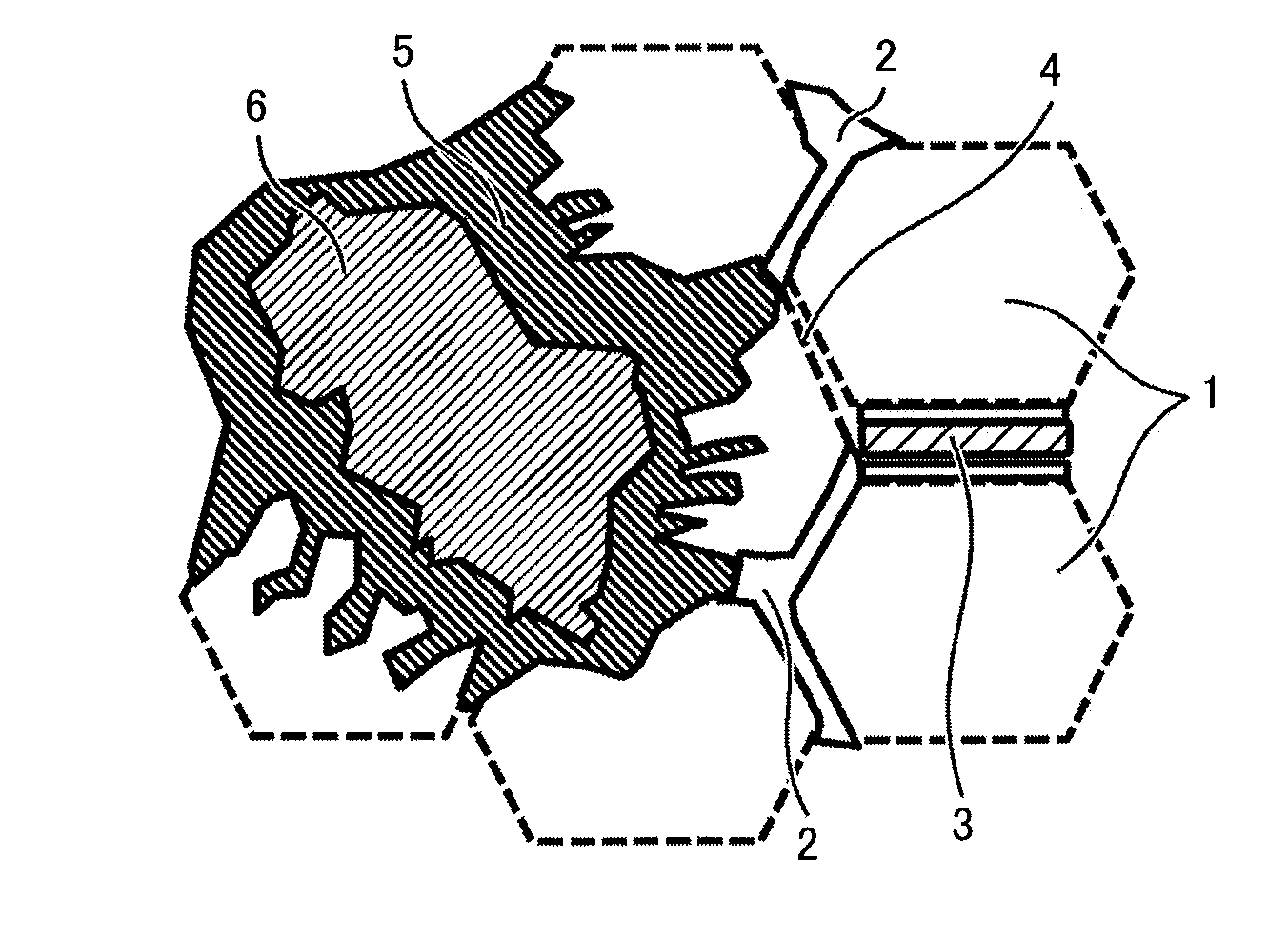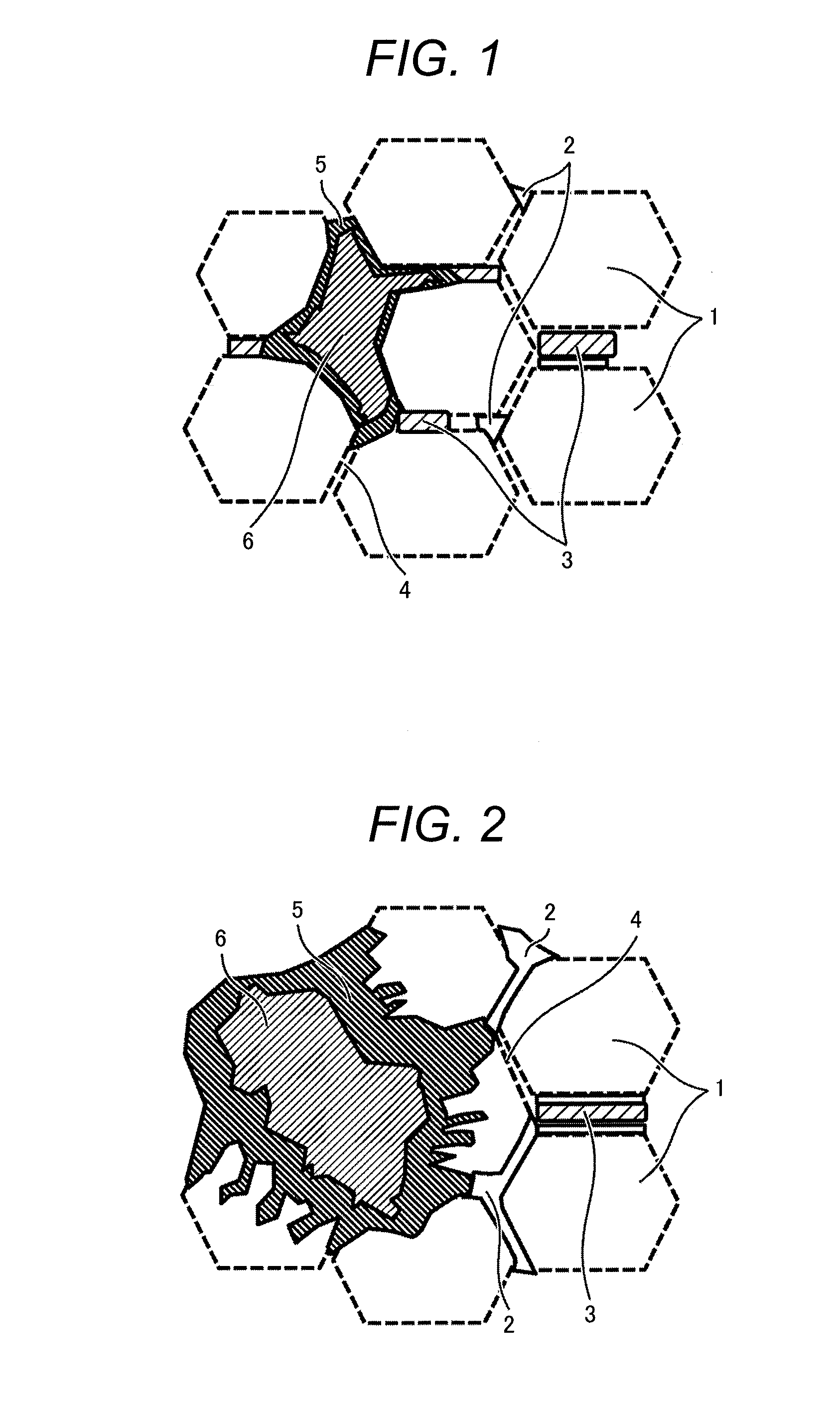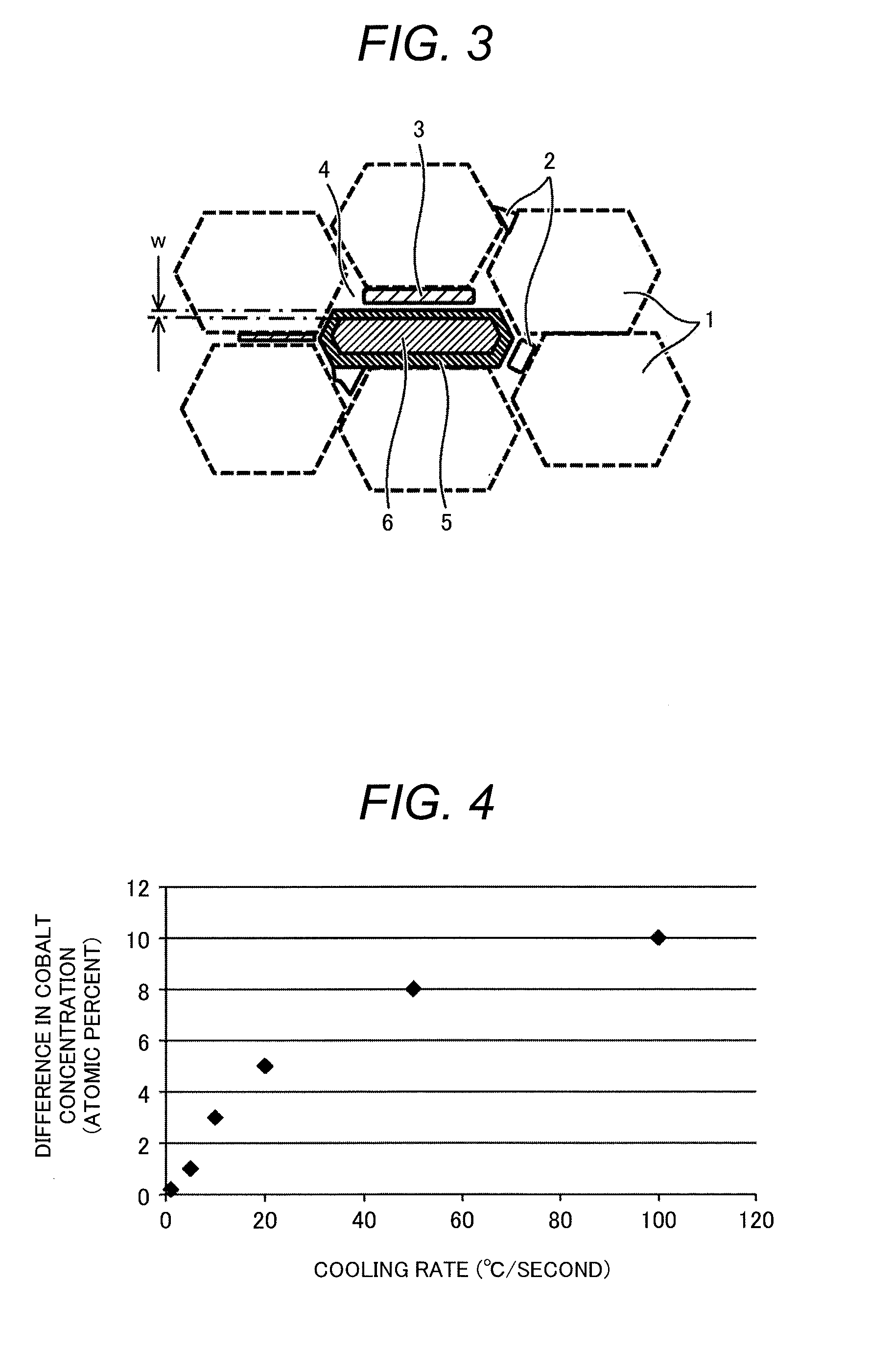Sintered Magnet
a magnet and magnetic field technology, applied in the field of magnetic fields, can solve the problems of insufficient coercivity of magnets having a maximum energy product, remarkably inferior heat resistance or demagnetization resistance, and insufficient coercivity of magnets, so as to increase the maximum energy product, increase the coercivity, and increase the effect of remnant flux density
- Summary
- Abstract
- Description
- Claims
- Application Information
AI Technical Summary
Benefits of technology
Problems solved by technology
Method used
Image
Examples
example 1
[0033]Particles of an alloy containing 70% of iron and 30% of cobalt are prepared by gas atomizing so as to have an average particle size of 1 μm, and mixed with a TbF alcohol solution to form a TbF film thereon. The TbF film has an average film thickness of 10 nm. The resulting TbF-coated 70% Fe-30% Co alloy particles are mixed with a Nd2Fe14B powder having an average particle size of 1 μm in a solvent without being exposed to the atmosphere. Upon mixing, an organic dispersing agent is added in an amount of 0.1%. The TbF-coated 70% Fe-30% Co alloy particles are used in an amount of 20% with respective to the Nd2Fe14B powder. The use of the dispersing agent prevents the aggregation of the 70% Fe-30% Co alloy particles and enables compact molding in a magnetic field. The TbF film has a composition of TbF1-3, which further contains oxygen and carbon in an amount of from 0.1% to 40%. A green compact (molded article) compacted in a magnetic field includes the 70% Fe-30% Co alloy particl...
example 2
[0059]Particles of an alloy containing 70% of Fe, 28% of Co, and 2% of B (percent by weight) are prepared through a rapid solidification process so to have an average particle size of 100 μm, and mixed with a TbF alcohol solution to form a TbF film thereon. The TbF film has an average film thickness of 15 nm. The TbF-coated 70% Fe-28% Co-2% B alloy particles are mixed with a Nd2Fe14B powder having an average particle size of 1 μm in a solvent without being exposed to the atmosphere. Upon mixing, an organic dispersing agent is further added in an amount of 1%. The TbF-coated 70% Fe-28% Co-2% B alloy particles are used in an amount of 30 percent by volume relative to the Nd2Fe14B powder. The use of the dispersing agent prevents aggregation of the 70% Fe-28% Co-2% B alloy particles and Nd2Fe14B powder and enables compact molding of the resulting mixture in a magnetic field. The mixture is compact-molded in a magnetic field of 10 kOe under a load of 2 t / cm2 to give a green compact which...
example 3
[0078]An alloy containing iron and 10 percent by weight of cobalt is melted in a vacuum, reduced in an atmosphere of nitrogen and 5% of hydrogen, subjected to high-frequency melting, quenched, and thereby yields a foil having a thickness of from 1 to 20 μm and an average particle size of 100 μm. The foil is mixed with a mixture (dispersion) of DyF particles in a mineral oil and pulverized in a bead mill. The DyF particles having a diameter of 0.1 mm are used as the beads. The FeCo crystal powder is controlled to have an average particle size of 5 μm, to the surface of which the DyF particles having a diameter of from 10 to 100 nm are attached. The pulverization is performed by heating the materials in the bead mill at a temperature of 150° C., and this induces mutual diffusion at the boundaries between the DyF particles and the FeCo crystal powder to form a layer of DyF particles on the surface of the FeCo crystal powder. The DyF particles cover the surface in a surface coverage of ...
PUM
| Property | Measurement | Unit |
|---|---|---|
| saturation flux density | aaaaa | aaaaa |
| saturation flux density | aaaaa | aaaaa |
| width | aaaaa | aaaaa |
Abstract
Description
Claims
Application Information
 Login to View More
Login to View More - R&D
- Intellectual Property
- Life Sciences
- Materials
- Tech Scout
- Unparalleled Data Quality
- Higher Quality Content
- 60% Fewer Hallucinations
Browse by: Latest US Patents, China's latest patents, Technical Efficacy Thesaurus, Application Domain, Technology Topic, Popular Technical Reports.
© 2025 PatSnap. All rights reserved.Legal|Privacy policy|Modern Slavery Act Transparency Statement|Sitemap|About US| Contact US: help@patsnap.com



